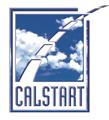In Zero-emission Busses, Seattle Sees an Opportunity on Par with Rail
By John Jackson, Project Manager at CALSTART
The value of battery electric and fuel cell buses is growing and, in the United States in particular, transit agencies are taking notice of what they can do for their communities. CALSTART’s recent Zeroing in on ZEBs: The Advanced Technology Transit Bus Index report, paints a unique picture about the priority of agencies wanting to transition to zero emissions buses.
An important model of success from the report is found in the state of Washington, where they have the second highest number of ZEBs in the U.S., behind California. During grad school at the University of Oregon, I interned with the Federal Transit Administration’s (FTA) Region 10 office in Seattle working with agencies such as King County Metro, Puget Sound Regional Council (PSRC), and Sound Transit. Over the years, I’ve watched these agencies change focus to improve their bus programs to make them less fuel hungry, cleaner and overall better for their ridership.
More recently, Washington’s King County Metro and the Puget Sound region have put heavy emphasis on in improving its bus system. It’s done this in parallel with the expansion of the Link Light-Rail rail system that will soon connect the entire Puget Sound region via Sound Transit after the passing of a major transportation initiative in ST3. ST3 will provide billions of dollars in tax revenue for transit related projects in the Seattle area.
While rail has become a major priority in Seattle as well as other places across the country, city officials have not lost sight of the equal importance of improving bus systems. Expansion and faster headways is one way to make bus systems better but also in the deployment of zero-emission units that reduce harmful pollution and save on fuel costs. King County Metro has put emphasis on reducing the pollutants its buses produce while simultaneously improving its bus service, and as a region improving its rail service. Now, King County Metro has 129 zero-emissions busses (ZEBs) in service or on order, by agency the highest number in the nation. This is notable, and should be held up as the example to other transit agencies, because – in many cases – when cities start to expand and emphasize rail service, bus service typically suffers.
Our report includes many more insights into effective ZEB deployment. In the example of Seattle, we see that without a successful and efficient bus system, both in terms of logistics and fuel economy, the ideal mass transit system that many agencies envision is not achievable. When working to prioritize rail, agencies must provide a reliable connection to get to stations or stops. That is where ZEBs fit in. Buses are the best first mile-last mile connector. Not everyone lives close to a rail line, but most everyone lives close to a bus stop.
CALSTART’s Zeroing in on ZEBs: The Advanced Technology Transit Bus Index report, as with all our research, is executed with the goal of informing the next steps in transportation innovation at all levels, whether it is light-duty vehicles for the consumer or massive fleet transformations. Our hope is that the data from the Puget Sound region can inform decisions by other transit agencies on the benefits of an efficient and complimentary bus system, from service to emissions.
